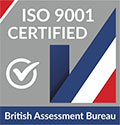Every day, companies make difficult choices about where to spend limited resources to achieve their goals and mitigate risks. Occupational health and safety and duty of care are often key considerations in making these complex decisions. Duty of care is a set of ethical, legal, and financial requirements that employers must fulfill to provide a safe and healthy work environment for their employees. This often involves providing on-site access to medical professionals and resources.
Hiring, managing, and supporting a medical professional—especially in a remote, challenging, or industrial environment—is no easy task. Many companies choose to outsource the service to an organization with special experience in this field. Those that choose to self-perform—hire and support the medical professional themselves—are faced with a daunting set of regulatory hurdles to surmount and backend support to establish. They may find themselves exposed to a potentially ruinous outcome if something goes wrong. If your company is considering self-performing, we recommend reviewing this list of items to make sure that you’ve accounted for all of these important, and often costly, factors.
A Licensed, Credentialed, & Supervised Medical Professional
In most states in the U.S., worksite medical professionals must either meet a certain level of licensure to practice independently, or must be supervised by a Medical Director who meets that standard. Internationally, industry best practices dictate that providers work under a licensed Medical Director.
In some cases companies hire medical providers like EMTs or nurses, but fail to account for the cost of providing medical direction for these individuals. Additionally, they may not have the experience to evaluate a candidate’s suitability for an industrial or remote environment. Any medical professional must also undergo ongoing education and certification to continue practicing.
Expected costs: Tens of thousands to hundreds of thousands per year, depending on the number and level of the providers.
Read More: NIH article on credentialing, licensing, and education for medical professionals
Medical Protocols
To those outside the medical field, it may seem like a simple enough matter to handle the type of cases that come up on worksites. However, even seemingly innocuous cases can become complicated if not handled correctly, and may be unnecessarily escalated to a higher OSHA classification.
All types of medical cases, including those that can mean life or death, require foresight and practices clearly laid out in medical protocols that the average medical professional may not know how to create. Especially if your worksite is in a remote, challenging, or industrial environment, it’s critical to have environment-specific medical protocols in place and ensure that your medical practitioner knows how to provide your employees high quality care while avoiding costly recordables and protecting your company from potential liability.
Expected costs: Tens of thousands of dollars to develop or license medical protocols appropriate for your context.
Read More: NIH article about the benefits, limitations, and harms of clinical guidelines
Formulary & Controlled Substance Management System
One of the most common functions of medical professionals at worksites is helping to provide and manage medications, from over-the-counter drugs to controlled substances. A formulary is, at its most basic level, a list of available medications and instructions for their appropriate use. Critically important for any company is a formulary developed with an understanding of how different medications might impact recordables and which are, and are not, ideal for remote, challenging, or industrial environments. More than likely, some of the medicines in your formulary will fall under the classification of a controlled substance, which requires specific procedures for tracking and administering them.
Expected costs: Tens of thousands to create a formulary and a controlled substance management system.
Read More: Details of the regulations for controlled substances can be found here
HIPAA Compliant Policies & Procedures
The Health Insurance Portability and Accountability Act (HIPAA) lays out clear requirements for managing health information for any entity that is providing or managing healthcare services. By directly providing medical services you are considered a “covered entity†and must fully comply with all the applicable provisions of HIPAA.
Providing healthcare services to your employees involves gathering and storing health information, and as such, your company must implement processes, including a medical records system, that are HIPAA compliant.
Expected costs: tens of thousands to hundreds of thousands per year to create, manage, and enforce proper policies and procedures, depending upon the size of your company.
Read More: A sample HIPAA compliance checklist can be found here
Malpractice Insurance
Directly providing medical care for your employees at a worksite also means taking on new liabilities if something goes wrong. Malpractice insurance helps to protect against damages, but it’s important to understand the level of coverage that is required. Most malpractice insurance policies have limits for individual incidents and a yearly maximum. Many policies also fail to cover court costs. If you hire a physician that carries their own malpractice insurance, you should consider the limits of their coverage and potentially purchase additional coverage for your company to cover liabilities above and beyond those limits.
You also have to consider the cost of turnover. As your medical providers depart and change, you’ll need to purchase additional extended coverage to cover you for any claims that arise from their time with your company. This can leave you in a situation where you’re paying for multiple overlapping policies. Finally, all policies have limits, so if you run into a case that exceeds those limits, you’ll be liable for any additional costs associated with it.
Expected costs: Tens of thousands of dollars per year for premiums for each policy you require, as well as the cost of your deductible and potentially court costs in case your insurance is used.
Read More: Analysis of medical malpractice payouts for 2015
Consultative Telemedicine Services
Whatever type of medical professional your company hires, they’ll probably encounter cases where they need help, be it a second opinion or advice from advanced or specialist practitioners. The timing of this is unpredictable, and when needed it’s often needed immediately, so 24-hour accessibility is important.
This requires access to consultative telemedicine services with 24-hour accessibility, which comes at a cost. This access can often rule out the need for a referral or evacuation. If those services are needed, however, telemedicine services can also provide assistance coordinating with emergency services or providing an evacuation if your worksite is remote.
Expected costs: Tens of thousands of dollars per year to hire a telemedicine service company.
Read More: Telemedicine applications in occupational medicine
Medical Emergency Response Plans
When something does go wrong, it’s critical to have a plan for how your medical team and employees should respond. Whether it’s an outbreak of illness or an industrial accident that causes severe injuries, it’s your responsibility to have a plan in place to manage this medical emergency.
Medical Emergency Response Plans typically include key contact information for all parties, a step-by-step evacuation plan, vetting of appropriate nearby medical facilities, transportation plans, and health risk assessments. A good Medical Emergency Response Plan can typically take over two weeks to complete and requires a multidisciplinary perspective.
Expected costs: Thousands of dollars for the development of a plan specific to your work site.
Read More: Emergency procedure flow charts
Conclusion
Fulfilling your duty of care is a serious responsibility for any employer. Self-performing can be a valid option if your particular needs are very unique, but you need to be sure to cover all of your bases. A mistake in any one of these areas can be costly. Malpractice lawsuits can sometimes cost hundreds of thousands of dollars to litigate, costs that many insurance policies don’t cover.
In addition there are criminal fines and potential prison sentences associated with things like DEA record keeping and HIPAA violations. Finally, mistakes that lead to increased OSHA recordables can cost your company business, keeping you from securing contracts that might be worth hundreds of thousands or even millions of dollars.
Contact Us
If you’re unsure about whether you should self-perform, we invite you to reach out and speak with a specialist on our team. Remote Medical International is a global occupational healthcare provider. If you decide you need a dedicated occupational healthcare provider, we can fill that need, and if you’re looking for a set of specific services to help you self-perform, we can help you avoid costly mistakes.

